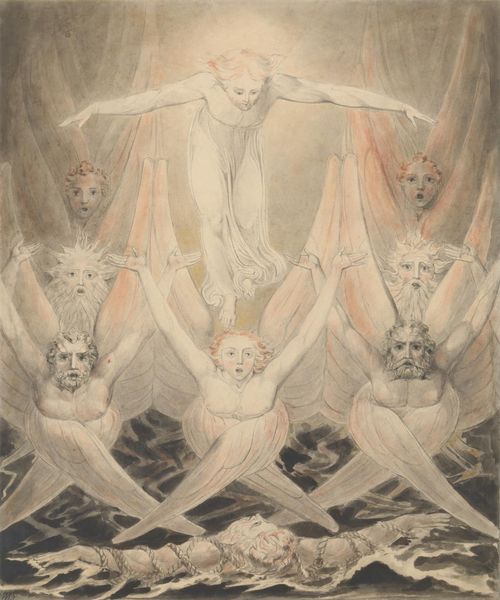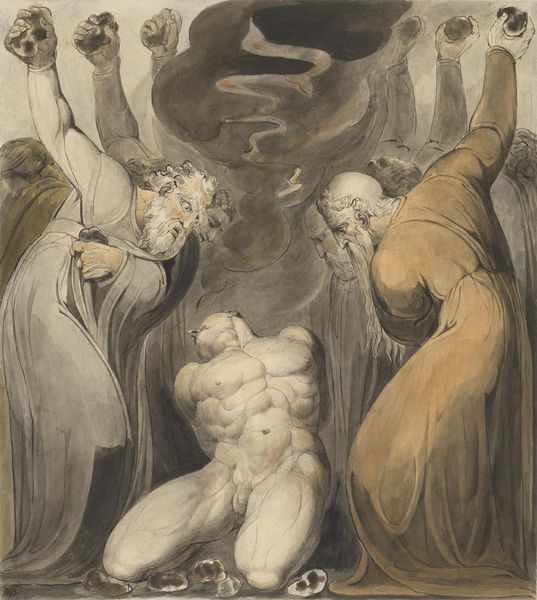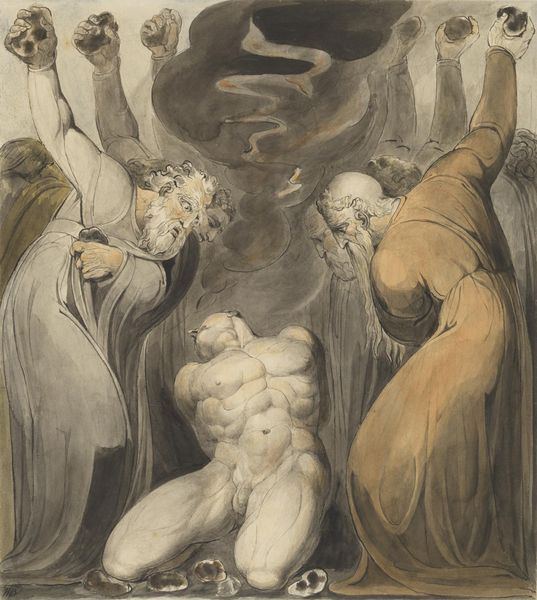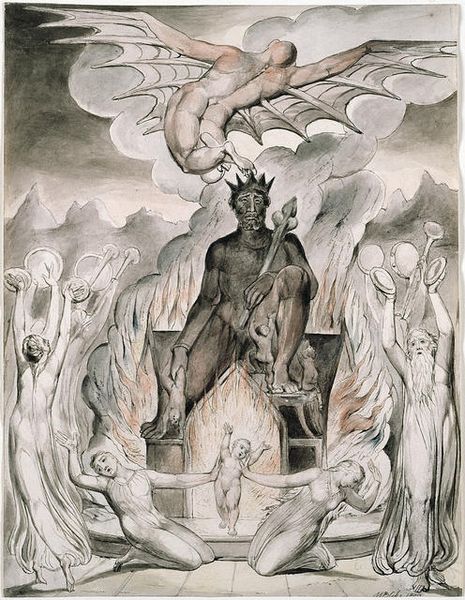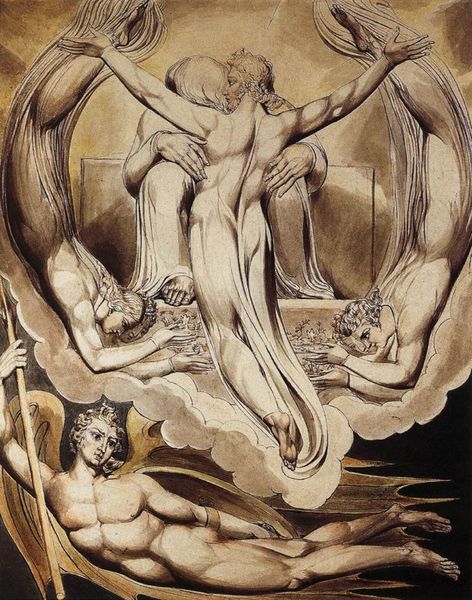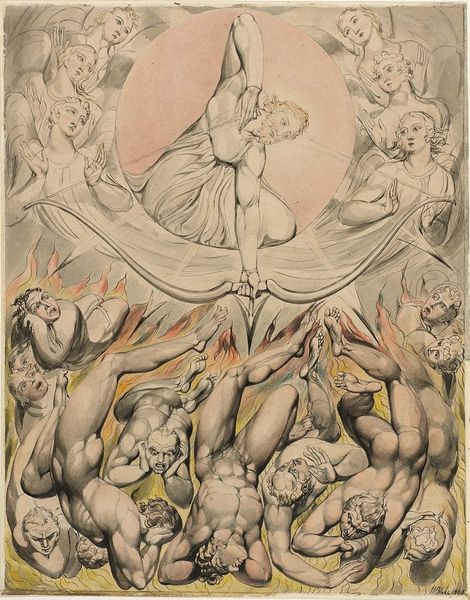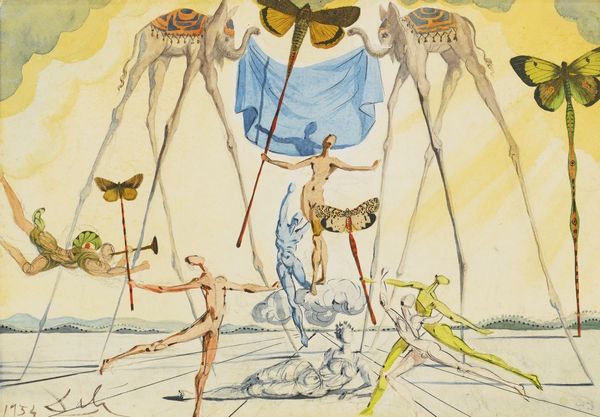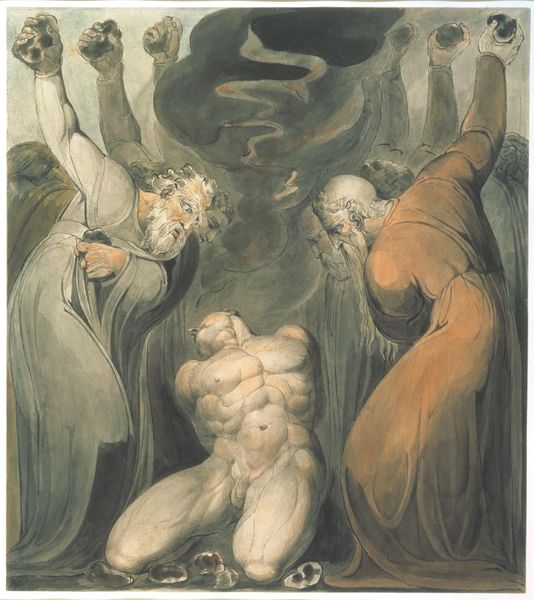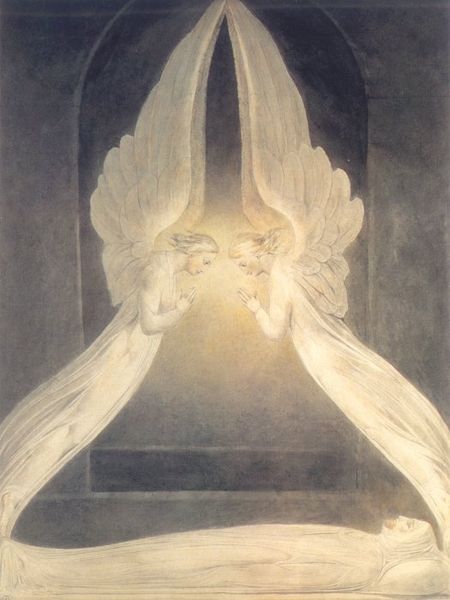
Dimensions: support: 415 x 348 mm
Copyright: NaN
Editor: Here we have William Blake's "David Delivered out of Many Waters," held at the Tate. The figures seem to be emerging from the paper itself. What can you tell me about this piece? Curator: Let's consider the materials and process here. Blake's use of watercolor and pen, combined with his unique printing methods, allowed for a highly personal, almost handmade quality. How might this deliberate rejection of industrial production reflect Blake's social concerns? Editor: I see. It's like he's pushing back against the factories that were emerging during his time. Curator: Precisely! The materiality speaks to his critique of labor and the growing divide between the artisan and mass production. He uses these methods to create these ethereal works. Editor: That makes me appreciate his work even more, knowing his process was so deliberate.
Comments
tate 8 months ago
⋮
http://www.tate.org.uk/art/artworks/blake-david-delivered-out-of-many-waters-n02230
Join the conversation
Join millions of artists and users on Artera today and experience the ultimate creative platform.
tate 8 months ago
⋮
This work shows how Blake responded visually to textual sources. It is an illustration to Psalm 18, in which David (at the bottom of the image with his arms stretched wide) calls out to God for salvation from his enemies. Christ appears above, riding upon seven cherubim (angels), not one as in the text. Blake’s gentle, linear style, formal composition and free interpretation of a written source made him attractive to many modern artists. Paul Nash saw Blake as representing a British imaginative tradition. Gallery label, August 2004
